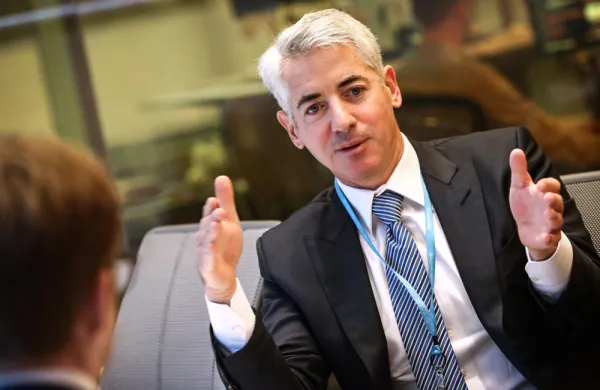To many Americans these men came to symbolize the all-too-common triumph of greed over ethics as the stock market bubble expanded in the late 1990s.
In Origins of the Crash: The Great Bubble and Its Undoing, Roger Lowenstein excoriates these and other men along with the financial institutions and government officials who made their schemes possible. But he also frames bubble-era scams and subterfuge as the inevitable consequence of a gathering wave of greed and deception that had its roots in the undervalued stock market of the late 1970s.
This is not an original observation, but the historical antecedents of the bubble have been little discussed in other books. The perspective leads to a pessimistic forecast about the prospects for preventing another corruption-riddled bubble from emerging. After the crash, writes Lowenstein, "the provisions to deter specific offenses and crimes have been well conceived . . . [but] efforts to reform the financial culture may prove to be notably less successful."
A former Wall Street Journal reporter and the author of bestsellers about Warren Buffett and Long-Term Capital Management, Lowenstein blends detail and drama in a colorful, fast-paced narrative. It's a sign of the times, not a fault of the author's, that Origins of the Crash seems outdated even before its January publication date. The book went to press before the onset of the mutual fund scandals, which arguably hit closer to home for the individual investor.
The roots of the bubble, Lowenstein argues, lay in the market malaise of the late 1970s. Low share prices gave corporate raiders a chance to take over companies through LBOs. To defend their companies -- and their jobs -- CEOs made high share prices their top priority. Corporate directors increasingly endorsed stock options as a motivational tool.
Shareholder value became shareholder greed, though, as Internet hysteria intensified. Because options don't need to be expensed, crony-laden boards doled them out in megadoses. That led managers to focus on short-term earnings and share prices rather than long-term corporate interests. Many accountants, analysts, executives and investment bankers abandoned their ethics as they joined together to pump up stock prices and enrich themselves.
Although his derision is palpable, Lowenstein also sees the era's villains as victims, at least partly, of their times. "Few corporate miscreants set out to break the law," he writes. "In finance, alas, the fudged earnings report, like the goosed-up revenue number, raises -- not lowers -- the temptation to cheat again."
The historical perspective leads Lowenstein to a sobering conclusion: The bubble made a sham of public disclosure. The concept holds that public disclosure of corporate information allows investors to punish corporations that have ethical lapses and poor performance. Because public disclosure isn't reliable "in a culture that tolerates lying, even in seemingly marginal ways," financial bubbles will return, the author concludes. Lowenstein, however, offers no prescription to reverse what he sees as the fundamental problem of "cultural devolution," which, despite the scandals, continues to manifest itself in the countenancing of overpaid and imperious CEOs and poor corporate governance.
That rings true. But Lowenstein's analysis underplays the significance of broader forces that gave the 1990s a unique zeitgeist -- and by definition cannot be repeated. The end of the cold war and the sharp decline in American defense spending boosted confidence.
Lowenstein is also a bit too quick to ascribe immoral intentions to the market's cheerleaders. For instance, he chastises Merrill Lynch & Co. for claiming that the Internet would transform society. "The Internet revolution is allowing for creativity like never before, perhaps putting more of us in touch with the meaning of life," he quotes a Merrill Lynch report as saying.
Hype did run rampant, but not all assertions were contrived or self-serving. For example, what turned out to be wildly optimistic forecasts in the mid-1990s of booming bandwidth demand were widely accepted by many reasonable people with no financial stake in the matter. And it wasn't until 2000 that a glut of capacity prompted prices to plummet.
Culture may have devolved, as Lowenstein asserts. But culture is fluid. In a different political climate, public outrage and a strengthened Securities and Exchange Commission could go a long way toward restoring the sanitizing function of public disclosure. Just ask Richard Grasso, who in September was ousted as chairman of the New York Stock Exchange after details of his $187.5 million pay package became known.
Steven Brull is a Senior Editor at Institutional Investor.





